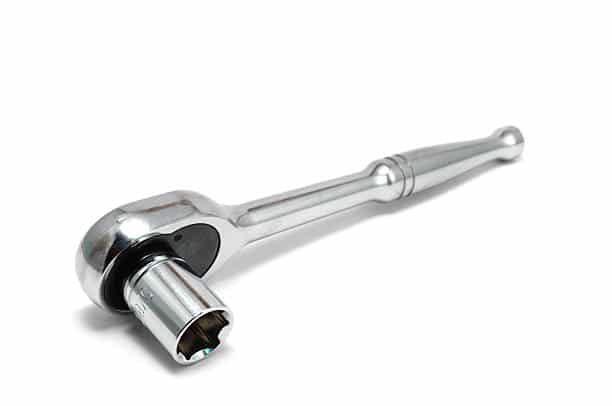That’s fantastic news! You’ve landed your ideal job and are ecstatic—congratulations! Before you start mentally decorating your new desk, there’s one thing you need to take care of. Submitting a letter of resignation.
You must quit your existing position, which necessitates learning how to write an effective resignation letter informing your current supervisor of your decision.
Is it a little awkward? Certainly, employees, on the other hand, quit all the time in every firm and industry around the world. Nobody expects you to work in the same place for the rest of your life.
It’s normal practice to submit a resignation letter, whether or not you depart on good terms. Maintain your composure. You might be tempted to draft a resignation letter and move on, but this official farewell deserves more thought.
While a resignation letter will notify your employer that you are leaving, you can also use it to strengthen ties and leave positively.
This article provides more information about resignation letters and a complete guide on how to write a good letter of resignation. Carefully read!
Table of contents
What is a Resignation Letter?
A resignation letter is an official document notifying your employer that you will leave the firm. Many resignation letters include aspects such as the reason for leaving, gratitude for the opportunity to work, and an offer to assist with the transition.
Simple resignation letters simply require the most basic information to allow the company to begin the process of terminating your employment.
A header with the date, the recipient’s name, and the company’s information should be included in your resignation letter.
The body of your letter can consist of a single sentence stating that you will be quitting your work on a certain date.
Finally, at the bottom of the letter, include your contact information in case your employer has any further concerns.
Why Would You Want to Write a Letter of Resignation?
A resignation letter is a quick and easy way to transmit the same document to multiple departments, keeping everyone informed of your leaving.
Your manager will be impressed by the gesture and grateful for the information if the paper is polite and straightforward. It may also offer intangible benefits to your job, such as potential letters of recommendation and positive word-of-mouth reviews, and even help you return to the firm, as long as it is constructive.
Read this: Cover Letter for Internship That Won | Samples and Writing Tips
What should you put in your email?
Keep your email to a minimum when writing it. It is not required to say what your future employment will be or where you will be moving.
It’s fine to leave out certain things! Begin with noting your title and the date you will depart, which is usually the date you specified in your two-week notice. However, this helps to give the company time to recruit a new employee to fill your position.
Also, try to show your appreciation for the opportunity. You don’t need to create a complete essay; just a few genuine lines would suffice.
It’s a good idea to note that you’re willing to educate any new employees or generate any necessary training materials during your last two weeks on the job to help the next individual transition seamlessly.
Finally, if it makes you feel more at ease, add your personal contact information if they need to contact you for any reason.
List Of What You Must Include In a Letter of Resignation
For clarification purposes, here is a list of what you must include:
1. Date of the letter: On the top left line above the address, write the date you sent the letter.
2. Give your address: A formal business letter template should be used for the address. On the first line, write the company name, then the street address, city, and ZIP code.
3. The person to whom you are writing: Your manager is normally the addressee, and you can use their first name. You can address a broader audience, such as a unit, team, department, or the entire organization if the situation requires it.
4. Letter of Resignation: From the first sentence, you must make it clear that you are retiring.
5. The Departure Date: Your manager will be able to strategize the best course of action if you have a firm leave date.
6. Explanations for Departure (Optional): In this section, use your diplomatic skills to explain your leaving. General health issues, spending more time with family, relocation, career change, and many other reasons are acceptable.
Keep in mind that using this document to convey displeasure with your organization is usually not the best option. You may metaphorically nail 95 issues to your boss’s desk by detailing areas in need of urgent reform, but consider the benefits and drawbacks of doing so.
7. Thank You: Make sure to thank your boss and, if you’re feeling thankful, appreciate the opportunity they offered you at the end of the letter.
8. Signature: If you’re mailing the letter, sign it above your typed name. An online resignation letter might be as simple as a typed name.
What to Leave Out of Your Resignation Letter
Complaints or criticisms of the employer or coworkers should not be included in resignation letters. Keep it straightforward, stick to the facts, and don’t whine. Because you may need a reference from the employer, it’s critical to leave on a nice note.
Tips for writing a Simple Letter of Resignation.
Even if you’re retiring for a good reason, it can be a stressful situation. Following these suggestions can help you feel more prepared and confident in your decision.
1. Make use of a template or an example.
Following a template or example, the letter is one of the finest ways to write a resignation letter. Templates typically have blank fields that you may quickly fill in and straightforward, business-like text. When writing your own letter, you can also utilize an example as a guide.
2. Consider talking to your boss.
Official documents are simple resignation letters. You can still address your reasons for leaving and thank them for pleasant experiences in less formal settings if you have a solid relationship with your manager and team members. As a professional courtesy, try to notify your supervisor in person before submitting your letter.
3. Keep in mind who you’re speaking to.
You may have to distribute your resignation letter to many people at your organization. You might have to send your letter to both your manager and a human resources person, for example. Keep your information as accessible as possible so that different company members can understand it.
4. Maintain your composure.
Prepare for any negotiations or queries about your reasons for leaving. Your boss may also request that you extend your notice period. While assisting your former colleagues is crucial, you must also consider your future. A short resignation letter can assist you in leaving your job on good terms.
5. Prepare to go right away.
While it’s still standard to give at least two weeks’ notice, certain workplaces have security policies that compel you to leave right away. So that you may depart without being seen, make sure your work area and computer are clean.
These pointers will assist you in selecting the proper format for your letter and leaving your employment on a professional note.
How to Write a Letter of Resignation
If you follow a few essential steps, writing a resignation letter can be a simple procedure. Before you write your letter, check with your immediate supervisor or HR manager to see if your organization has any procedures in place for resignations.
They may, for example, request certain details or direct your communication to specific individuals inside the organization. Include the following items in this sequence when writing a resignation letter.
1. Begin with an introduction and a resignation note.
Use a typical business letter format with the date and your contact information at the top of the page if you’re mailing your letter; if you’re emailing it, this information isn’t required.
Start your letter with a formal salutation, address the recipient by name, and use a traditional greeting like “Dear [First name],” or “Hello [First name]” if you prefer.
Next, indicate explicitly that you are writing to submit your formal resignation from the company and the date of your final day of work.
While giving two weeks’ notice is customary, your employer may have particular instructions on your last day of employment. List the date and weekday of your last day at the company after you’ve gotten this information.
Example:
Jane,
Please accept this letter as my formal resignation from ABC Company as a Senior Content Developer. My last day will be three weeks from today, on Friday, Dec. 10.
Also, check this: Easy Step by Step Guide on How to Get Student Loan Forgiveness Programs and Tips
2. Include a thanks statement.
Maintaining positive professional ties is usually a wise career move. Writing one or two phrases expressing your gratitude for your time at the organization will aid in a smooth transition.
Example:
I’m happy for the chance to learn from the finest and develop as a designer. I’ll never forget the opportunities I had working with you and your staff.
3. End with a summary of the following steps and a conclusion.
Include any pertinent information about your transition that the recipient should be aware of. These particulars can be worked out in advance with your boss.
If you’re unsure about your transition obligations, state that you’ll do whatever you can to make the transfer go as smoothly as possible. This type of gesture is usually well-received.
Finish with a closing phrase like “Sincerely” or “Thank you,” as well as your name.
Example:
To make this transfer as painless as possible, I want to finish my final design project by June 20 and outsource all remaining responsibilities to the appropriate team members with your consent. I wish you, your team, and the firm luck.
Thank you very much for everything.
John
Example of Resignation Email
Message: (Your name) Resignation
Dear (first and last name of employer or HR representative),
Please regard this communication as official notification of my resignation from the post of (job title). My last day of work will be December 31st (a specific date).
I am grateful for all of the changes that have been provided to me while working at (business name). Working on your team has allowed me to hone my professional abilities. I am pleased to support you during this time of transition.
I wish you and your firm every success in the future. Please contact me at (personal email and/or phone number) if you have any questions.
Warm regards,
(Your first and last name)
Example No. 1
Mr. Don Cohen, I am writing to express my heartfelt gratitude for all you have
Please take this letter as formal notification of my resignation from Marketing Media as an Account Executive. Thursday, March 2nd, will be my last day.
Thank you for allowing me to work in this position for the past six years. I’ve learned a lot about marketing strategy and the digital media landscape, which I’ll carry with me throughout my career, and I’ve had a lot of fun and loved the opportunities I’ve had to expand our sales team and pipeline, be a part of producing a fantastic product, and work with my coworkers.
Over the following two weeks, I’ll do everything I can to finish off my responsibilities and train the rest of the staff. If there’s anything else I can do to assist you during this change, please let me know.
I wish the organization ongoing success and look forward to communicating with you in the future.
Sincerely,
Anne Acharya
Example No. 2
Greetings, Ms. Fran Braden!
I’m writing to formally notify Larry and Keets Financial Partners that I’ll be quitting my position as Office Manager on July 31.
I was just offered a position as an executive assistant at a tiny business, and after much thought, I’m delighted to take this next step in my career.
I’m extremely appreciative of the opportunity I’ve had over the last four years working on the Operations team. Working at such a terrific firm and contributing to Larry and Keets’ objective of providing better financial support for senior employees has been a fantastic experience.
Please let me know if there is anything I can do to help you with this transition. Thank you for all of your help. I wish you the best of luck and hope to hear from you soon.
Sincerely,
George Lin
Conclusion
A resignation letter is a useful document that can be used in a variety of situations. The paper usually indicates that your tenure in the employment will be coming to an end in the following days. Prepare for any eventuality by tailoring your letter to the circumstances.
Reference
Recommendations
- Tips on how to study for finals | College & High School
- How to get Work in Poland for Foreigners| Best tips
- Easy Step by Step Guide on How to Get Student Loan Forgiveness Programs and Tips
- 21 Vital Tips That Can Boost Your CV As An International Student
- Cover Letter for Internship That Won | Samples and Writing Tips





